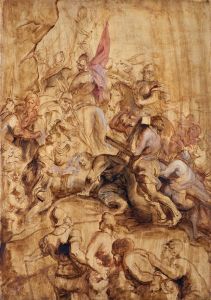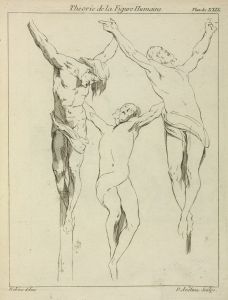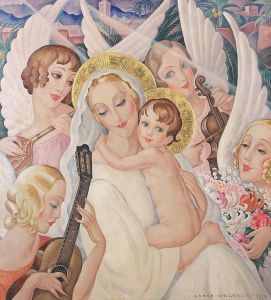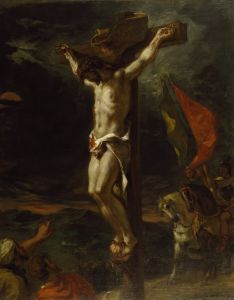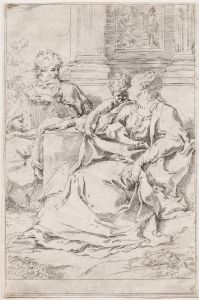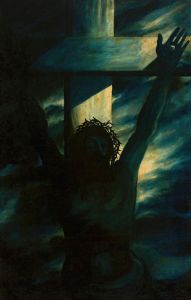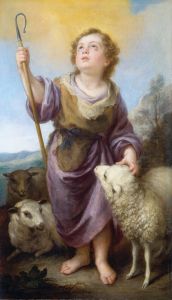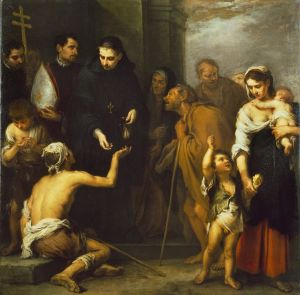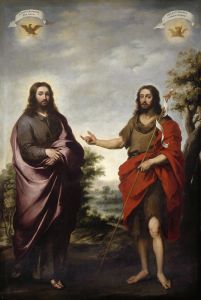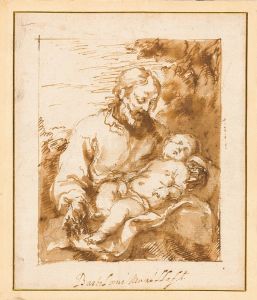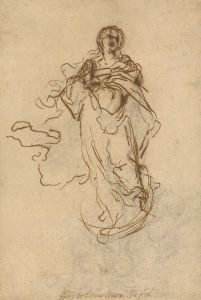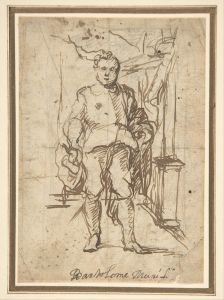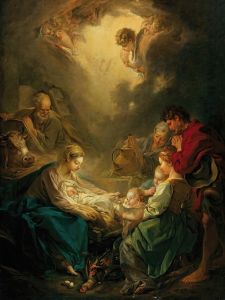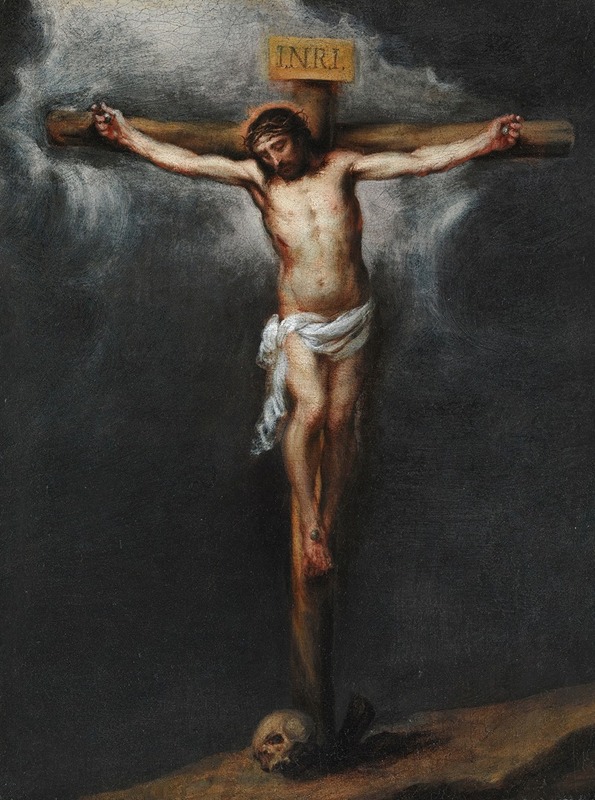
The Crucifixion
A hand-painted replica of Bartolomé Estebán Murillo’s masterpiece The Crucifixion, meticulously crafted by professional artists to capture the true essence of the original. Each piece is created with museum-quality canvas and rare mineral pigments, carefully painted by experienced artists with delicate brushstrokes and rich, layered colors to perfectly recreate the texture of the original artwork. Unlike machine-printed reproductions, this hand-painted version brings the painting to life, infused with the artist’s emotions and skill in every stroke. Whether for personal collection or home decoration, it instantly elevates the artistic atmosphere of any space.
Bartolomé Esteban Murillo, a prominent Spanish Baroque painter, is renowned for his religious works, among which "The Crucifixion" stands as a significant piece. Created in the 17th century, this painting exemplifies Murillo's mastery in capturing religious themes with emotional depth and technical skill. Murillo was born in Seville in 1617 and spent most of his life there, becoming one of the leading figures in the Sevillian school of painting. His works are characterized by their soft, warm colors, realistic depictions, and the ability to convey deep spiritual emotion.
"The Crucifixion" by Murillo is a poignant representation of the crucifixion of Jesus Christ, a central event in Christian theology. The painting captures the moment with a profound sense of drama and reverence. Murillo's depiction is noted for its serene yet powerful portrayal of Christ on the cross, emphasizing both his humanity and divinity. The composition is typically Baroque, with a strong use of chiaroscuro to highlight the figure of Christ against a darker background, drawing the viewer's eye to the central figure.
Murillo's Christ is often depicted with a sense of calm and resignation, reflecting the artist's focus on the spiritual and redemptive aspects of the crucifixion rather than the physical suffering. This approach is consistent with Murillo's broader body of work, which often emphasizes grace and divine love. The painting's color palette is subdued, with soft, earthy tones that enhance the solemnity of the scene.
In "The Crucifixion," Murillo employs a naturalistic style that was innovative for his time, moving away from the more rigid and formal representations of earlier periods. His ability to infuse his figures with a sense of life and emotion made his religious paintings particularly effective in conveying spiritual messages. This painting, like many of Murillo's works, was likely intended for a church or religious institution, where it would serve both as an object of devotion and a didactic tool.
Murillo's influence extended beyond his lifetime, as his works were highly regarded and collected by patrons across Europe. His paintings were instrumental in shaping the visual culture of Spain during the Baroque period, and his legacy is evident in the works of later artists who drew inspiration from his style and thematic choices.
"The Crucifixion" is a testament to Murillo's skill in balancing realism with idealism, creating a work that is both accessible and profound. While specific details about the commission or original location of this painting may not be well-documented, its enduring impact is clear. Murillo's ability to convey complex theological ideas through simple yet powerful imagery ensures that "The Crucifixion" remains a significant work within the canon of religious art.
Today, Murillo's paintings, including "The Crucifixion," are held in high esteem and can be found in major museums and collections around the world. They continue to be studied for their artistic merit and their contribution to the development of Baroque art in Spain. Murillo's work remains a vital part of the cultural and religious heritage, offering insight into the spiritual and artistic values of his time.





